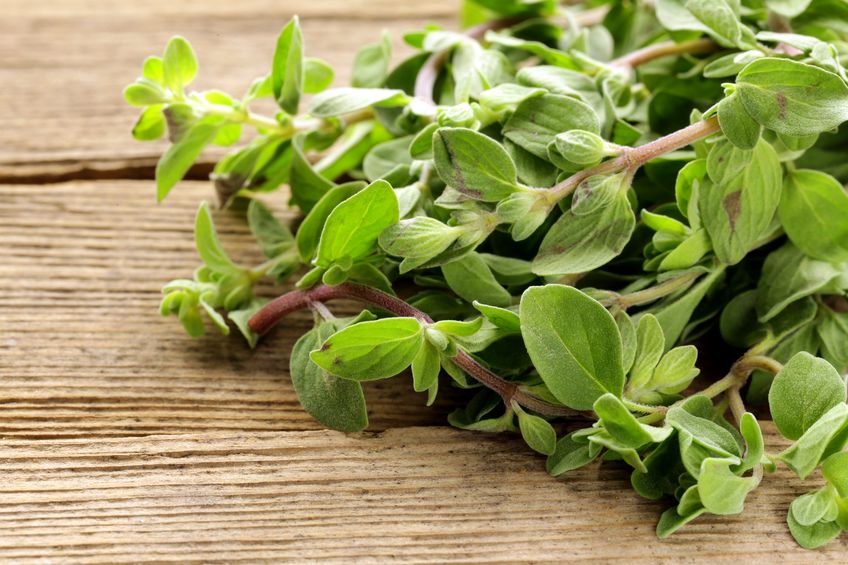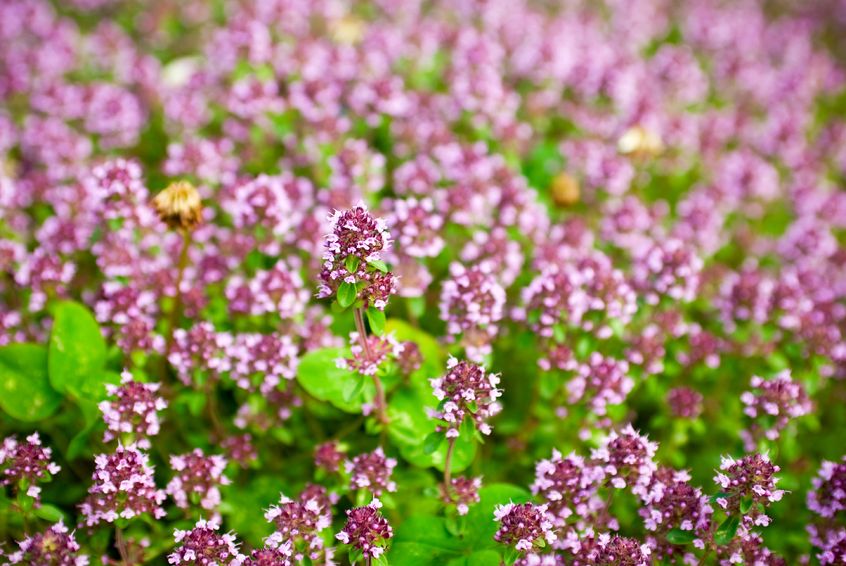Marjoram (Origanum majorana)
This herb for the home garden belongs to the genus Marjoram and comes from the mint family. Originally from Asia Minor, marjoram has now become firmly established as a spice in our region's kitchens and is increasingly found in cookbooks.

Cultivation and propagation – what should you pay attention to?
Marjoram plants enjoy sunny conditions and prefer dry, well-drained soil. Make sure to space each plant 30 to 40 cm apart to allow sufficient development. This herb is also very heat-loving and is usually cultivated as an annual, although two forms are actually perennial. Marjoram is generally not winter hardy, but with excellent drainage and a bit of luck, your plant will prove this wrong and survive the winter.
Starting in March, you can start growing marjoram in warm locations like a windowsill or in a greenhouse. Later, you should reduce the number of plants to about four per pot to ensure each has enough space for vigorous growth. These bunches of plants are best placed outside starting in mid-May.
Harvesting and preserving – when, what and how best?
Harvest quickly just before flowering! After the flowers fully open, the leaves develop a bitter aftertaste that doesn't go down well in the kitchen. Also, don't harvest the plant all the way to the ground, but leave a height of about 5 cm so it can sprout again later. This allows for a second harvest in September.
If you want to preserve marjoram, it is a good idea to dry it, as it is ideal for this purpose and retains its aroma for a long time.
Use – What recommendations for herbal cooking?
Marjoram has many uses in the kitchen. Almost all meat and potato dishes, as well as soups and stews, gain a certain something with a little seasoning. Marjoram can even be added during preparation, as it retains its flavor during cooking.
Application – What healing or caring effect?
Marjoram is recommended for inhalation for typical cold symptoms such as coughing or a stuffy nose. As a tea, it is effective for stomach and intestinal ailments and headaches. Due to its calming effect, it is also a good drink for those with trouble falling asleep.

Botanical – What kind of plant is this?
Marjoram is actually a perennial plant, but due to its high sensitivity to frost, it is only grown as an annual in our regions. It belongs to the same genus as oregano, which is also known as wild marjoram. This is why it is often confused. It is best distinguished during the flowering period, as the small white or pink flowers appear in small, round clusters.
Varieties – Which are recommended?
– 'Majorana hortensis': true marjoram, likes it warm and sunny
– 'Origanum onites': French marjoram, vigorous growth, leafy, particularly suitable for pizzas and spaghetti sauces, heat-loving
Interesting facts – What else is there to learn?
Aphrodite, the goddess of love and beauty, supposedly once described marjoram as a symbol of happiness. This led to the herb being believed to have protective powers. At Greek weddings, marjoram necklaces were often placed around the bride and groom's necks to ensure a long and happy marriage.
TEXT: Carina Naeve









































































































